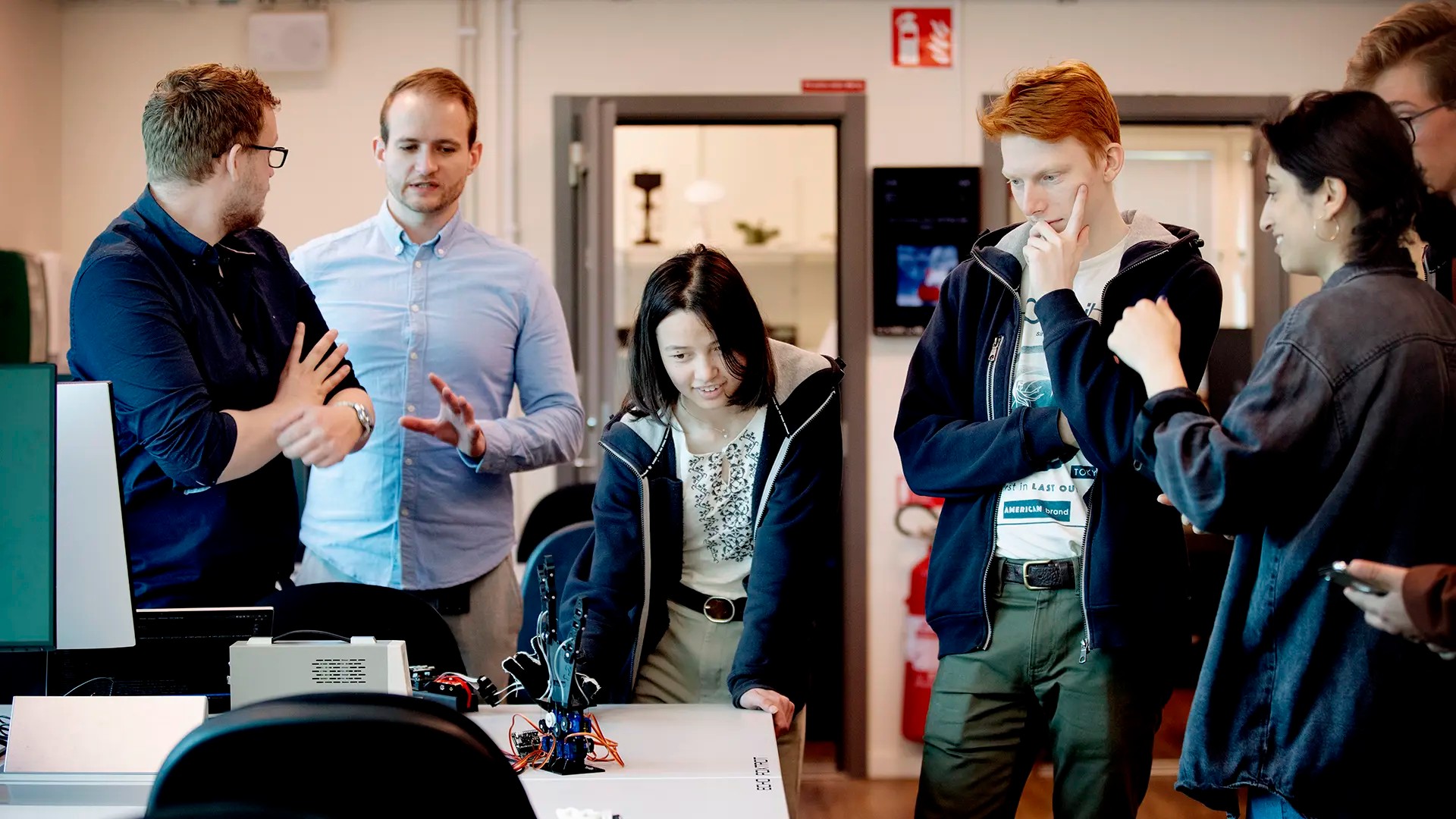
The division for Systems and Control is a proud host of the research centre:
- Safer, and
- The laboratory Revere
The division is divided into four main research units
- Automatic control
- Automation
- Bionic
- Mechatronics
The divions's purpose is to develop interdisciplinary research areas within the university and with external partners. The research activities at the division can be organised into four main areas: automatic control, automation, bionics and mechatronics. The division's research aims to solve societal challenges such as energy efficiency, sustainable battery use, improving the quality of life for people, and making our industries competitive through smart automation solutions, as well as safety in autonomous vehicles.
Future challenges that the division wants to focus on with its research are battery development, energy use, digitalisation, medical technology, rehabilitation, security and autonomous vehicles.
Automatic Control
Automatic control is an indispensable ingredient in contemporary design of machines and other systems of any complexity. Examples can be found in vehicles, robots, medical equipment, industrial processes, telecommunication systems, biotechnology and elsewhere. Automatic control is also a fundamental engineering discipline, established some fifty years ago, and now with applications ranging a wide spectrum. At the heart of automatic control is the analysis of dynamical systems and the use of feedback, i.e. when control actions are applied to a system, based on measurements, with the objective to compensate for disturbances, inaccurate system models etc.
Research in the Automatic control group concerns both fundamental questions in control methodology and applications of control in areas of industrial and societal interest. We are particularly interested in environmental and biological systems, applications in transportation and vehicle technology, and in systems and control aspects of electric power systems.
Automation
Within the Automation research area, a wide range of research is conducted within industrial automation. The focus is mainly on optimization, supervision and control of production systems. Typical examples are robot cells, conveyor systems, and complex machines. The research within the Automation area is mainly concerned with discrete event and logical systems, where complexity and information integration are two main challenges. Sustainable production and the relation between product, production and automation design are also important research areas.
Bionics
Research unit Bionics aims at improving the quality of life in people who have had amputations, central or peripheral nerve injuries, stroke, or other events leading to sensorimotor impairment. The research unit is located on Sahlgrenska University Hospital’s campus, which is important to us in developing medical engineering technologies that can be clinically implemented to help patients in need.
Our research focuses on four main areas:
- Bionic arms
- Bionic legs
- Neurorehabilitation
- Pain caused by sensorimotor impairments
Mechatronics
Nowadays, skills in several traditional engineering disciplines are necessary to design a technical system or a product. Mechanical hardware together with control algorithms incorporated into the system by means of built-in processors present new, interesting possibilities but also challenges. The engineer needs to master all these disciplines. At the same time the products can be more flexible and adaptable, since some of its properties are put into the software, which more easily can be modified.
Simulation and modelling are key components in all our projects.
By using computer simulations more possibilities can be investigated than if real prototypes are built. The validity of simulation results and techniques for simulation and modelling are also key questions that are being considered. Our projects concern the automotive industry and the engineering industry in general.
